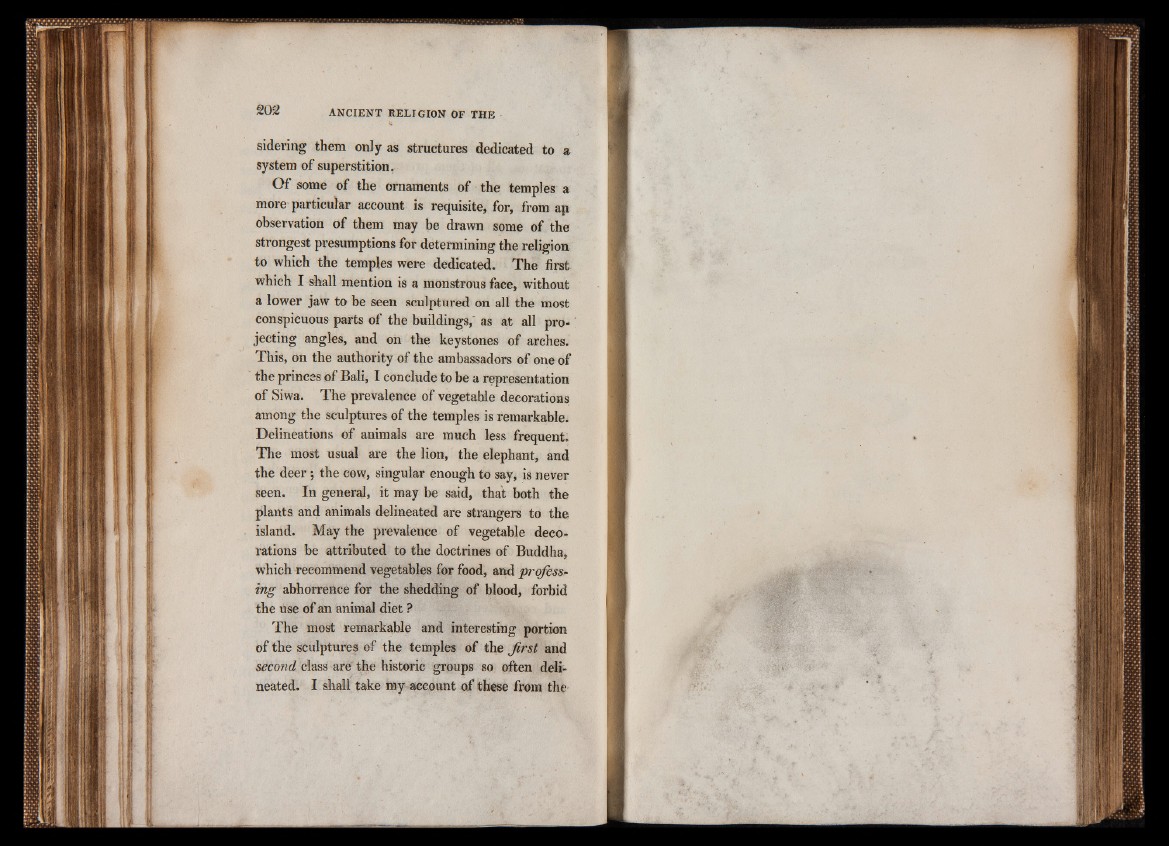
sideling them only as structures dedicated to a
system of superstition,
Of some of the ornaments of the temples a
more particular account is requisite, for, from an
observation of them may be drawn some of the
strongest presumptions for determining the religion
to which the temples were dedicated. The first
which I shall mention is a monstrous face, without
a lower jaw to be seen sculptured on all the most
conspicuous parts of the buildings, as at all pro-
jecting angles, and on the keystones of arches.
This, on the authority of the ambassadors of one of
the princes of Bali, I conclude to be a representation
of Siwa. The prevalence of vegetable decorations
among the sculptures of the temples is remarkable.
Delineations of animals are much less frequent.
The most usual are the lion, the elephant, and
the deer; the cow, singular enough to say, is never
seen. In general, it may be said, that both the
plants and animals delineated are strangers to the
island. May the prevalence of vegetable decorations
be attributed to the doctrines of Buddha,
which recommend vegetables for food, and profess-
mg abhorrence for the shedding of blood, forbid
the use of an animal diet ?
The most remarkable and interesting portion
of the sculptures of the temples of the first and
second class are the historic groups so often delineated.
I shall take my account of these from the